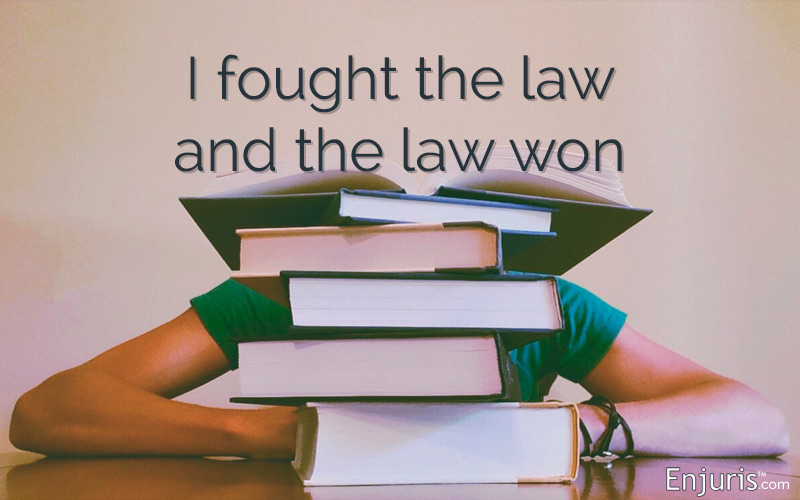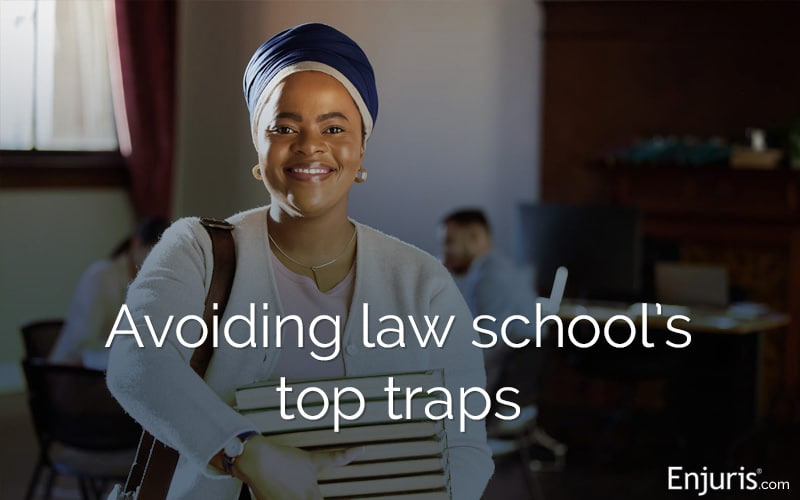
Get a head start on law school by reading these 10 cases available online for free
Prepare for law school success by familiarizing yourself with the top 10 cases every first-year student should know.
If you’re reading this, you’re probably the type who color-codes your social calendar and organizes your pantry by expiration date. In other words, you’re a future law student—and like most future law students, you’re already looking to get ahead.
A big part of 1L year will be learning to read case opinions. These are the building blocks of legal knowledge, and while reading them might eventually feel as routine as reading the back of a cereal box, at first, they’ll seem like a foreign language.
One way to make life easier is to start familiarizing yourself with a few landmark cases you’ll likely encounter. Summer is the perfect time to do this, before the full load of assignments kicks in. Numerous studies show that previewing complex material can make it easier to absorb when you tackle it again. This technique, often called the “exposure effect,” helps you recognize patterns and process dense material more effectively—especially helpful under the pressure of a semester’s workload.
With that in mind, here are ten landmark cases you’ll encounter as a 1L to give you a head start.
1. Marbury v. Madison, 5 U.S. 137 (1803)
Link to opinion: Marbury vs. Madison on Caselaw Access Project
One of the foundational cases you’ll encounter in constitutional law is Marbury v. Madison. Decided in 1803 (don’t worry, most cases you read will be from this century), this case established the principle of judicial review, meaning the Supreme Court can declare laws unconstitutional. Chief Justice John Marshall famously stated that it’s “emphatically the province and duty of the Judicial Department to say what the law is,” making it clear that the judiciary is a co-equal branch of government. This case is often seen as the birth of the Supreme Court’s power and is essential for understanding the role of courts in the United States.

2. Pierson v. Post 3 Cai. R. 175 (N.Y. Sup. Ct. 1805)
Link to opinion: Pierson v. Post on New York State Unified Court System
Welcome to the world of property law with Pierson v. Post, better known as the “fox case.” This 1805 case addresses who owns a wild animal when it’s pursued but not yet captured. The court ruled that mere pursuit does not confer ownership; the animal belongs to the one who captures it. Besides being a staple in property law classes, this case is memorable for its sometimes unintentionally hilarious elements.

3. Hawkins v. McGee, 84 N.H. 114 (1929)
Link to opinion: Hawkins v. McGee on Caselaw Access Project
If you’ve heard of the “hairy hand” case, you already know Hawkins v. McGee. This case is a contract law classic where a doctor promised to make a patient’s hand “100% perfect” after a skin graft. Spoiler alert: the result wasn’t perfect, and the patient sued. The court’s decision in this 1929 case discusses “expectation damages,” teaching that a breach of contract entitles the injured party to the benefit of the bargain, not just reimbursement for losses.

The case of Hawkins v. McGee is famously featured in The Paper Chase, one of the top ten movies we recommend for law students.
4. Palsgraf v. Long Island Railroad Co., 248 N.Y. 339 (1928)
Link to opinion: Palsgraf v. Long Island Railroad on Caselaw Access Project
Every Torts student learns Palsgraf v. Long Island Railroad, a foundational case about causation and foreseeability. The story goes that a passenger boarding a train dropped a package, which happened to contain fireworks. The explosion injured Helen Palsgraf, who was standing far away. Judge Cardozo’s famous opinion focuses on “proximate cause,” saying that the railroad wasn’t liable because Palsgraf’s injury was not foreseeable. This case often sparks discussions on the limits of liability and the challenge of proving causation.

5. Brown v. Board of Education, 347 U.S. 483 (1954)
Link to opinion: Brown v. Board of Education on Caselaw Access Project
One of the most famous Supreme Court decisions, Brown v. Board of Education addresses racial segregation in public schools. In 1954, the Court declared that “separate but equal” was unconstitutional, setting a cornerstone for civil rights law. Chief Justice Earl Warren’s opinion not only shaped the law but also brought social change, underscoring how deeply law and society intersect.

6. Erie Railroad Co. v. Tompkins, 304 U.S. 64 (1938)
Link to opinion: Erie Railroad v. Tompkins on Caselaw Access Project
Erie Railroad Co. v. Tompkins revolutionized civil procedure by rejecting the notion of a “federal common law” in favor of applying state law in federal courts for diversity cases. This 1938 decision drastically changed the way cases were handled across jurisdictions, and every law student studies its impact on the concept of federalism and judicial power.

7. International Shoe Co. v. Washington, 326 U.S. 310 (1945)
Link to opinion: International Shoe Co. v. Washington on Caselaw Access Project
International Shoe Co. v. Washington introduces the concept of “minimum contacts” for determining a court’s jurisdiction over out-of-state defendants. The Court held that a company must have sufficient contacts with a state for that state to exercise jurisdiction over it, establishing a crucial precedent in civil procedure for personal jurisdiction.

8. Mapp v. Ohio, 367 U.S. 643 (1961)
Link to opinion: Mapp v. Ohio on Caselaw Access Project
Criminal procedure students encounter Mapp v. Ohio early on. This landmark case extended the “exclusionary rule” to the states, meaning that evidence obtained illegally cannot be used in state courts. Building on the earlier case Silverthorne Lumber Co. v. United States, which introduced the phrase “fruit of the poisonous tree,” Mapp reinforced that not only direct evidence obtained unlawfully but also any evidence derived from it is inadmissible.

9. Roe v. Wade, 410 U.S. 113 (1973)
Link to opinion: Roe v. Wade on Caselaw Access Project
Roe v. Wade is a landmark case in constitutional law, initially decided in 1973. The Court ruled that a woman’s right to privacy included the choice to have an abortion, setting a precedent that weighed personal freedoms against government interest. However, in Dobbs v. Jackson Women’s Health Organization (2022), the Supreme Court overturned Roe, ruling that there is no federal constitutional right to an abortion. Law students will likely be assigned to read these cases back-to-back, followed by passionate class discussions on civil rights, liberties, and the shifting balance between privacy and state powers in constitutional law.

10. Gideon v. Wainwright, 372 U.S. 335 (1963)
Link to opinion: Gideon v. Wainwright on Caselaw Access Project
In Gideon v. Wainwright, the Supreme Court ruled that states must provide counsel to defendants who cannot afford an attorney in criminal cases. This landmark decision underlined the Sixth Amendment’s guarantee of the right to counsel, making it one of the most important cases in criminal procedure and the fight for equal justice under the law.








